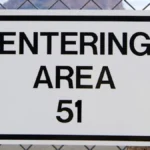
The word “landscape” comes from the Dutch word “landschap,” which refers to a region or area of land. This term evolved to refer to the arrangement of natural and artificial features on a piece of land, including trees, shrubs, and buildings. The concept of landscaping has been practiced for thousands of years, from the Hanging Gardens of Babylon to modern urban parks.
The Hanging Gardens of Babylon, one of the Seven Wonders of the Ancient World, were essentially an elaborate form of landscaping. According to legend, they were built by King Nebuchadnezzar II for his wife, who missed the lush greenery of her homeland. The gardens featured a series of terraces, each planted with trees, flowers, and shrubs. They were irrigated using a system of pumps and pipes that drew water from the nearby Euphrates River.
In 17th-century France, the idea of landscaping as an art form took hold, and gardens were designed to mimic the beauty of nature. Landscape designers used a variety of techniques to create visually appealing landscapes, including geometric shapes, water features, and ornamental plants. French formal gardens were characterized by symmetrical designs and highly manicured lawns, while English landscape gardens featured more naturalistic designs with winding paths and naturalistic plantings.
The first public park in the United States was Central Park in New York City, which was designed by Frederick Law Olmsted and Calvert Vaux in the mid-19th century. The park was built on land that had been mostly swampland and rocky terrain, and it took 20 years to complete. The designers sought to create a naturalistic landscape that would provide an escape from the city’s hustle and bustle, with meandering paths, scenic vistas, and a variety of plants and wildlife.
The first golf course in the United States was designed by landscaper John Morley in 1888. Morley created a nine-hole course in Yonkers, New York, using the natural terrain to create challenging holes. Over time, golf course design became more sophisticated, with designers incorporating water features, sand traps, and other hazards to create a more challenging playing experience.
The first recorded use of the word “landscape architect” was in 1828, by Gilbert Laing Meason in his book “Landscape Architecture.” Meason used the term to describe the art of designing gardens and landscapes, which he saw as a distinct profession. Today, landscape architects work on a wide range of projects, from designing public parks to planning sustainable urban developments.
The word “gardening” comes from the Middle English word “gardin,” which means a fenced-in area. This term evolved to refer to the practice of cultivating plants and maintaining a garden. Gardening has been practiced for thousands of years, with early civilizations using gardening techniques to grow crops and ornamental plants.
The most expensive landscaping project ever completed was the $1.2 billion expansion of the King Abdullah Financial District in Riyadh, Saudi Arabia. The project included the planting of over 95,000 trees and the creation of numerous public spaces, including parks, plazas, and courtyards. The landscaping was designed to create a more sustainable and livable environment for the city’s residents.
The largest landscaping project in history was the planting of 66 million trees in China’s Loess Plateau to combat erosion and desertification. The project, which began in 1994, involved thousands of workers planting trees and shrubs across an area of over 66,000 square kilometers. The project has been hailed as a success, with the reforestation helping to prevent soil erosion, increase biodiversity, and reduce poverty in the region.
The United States National Park Service manages over 84 million acres of land, which includes some of the most iconic and well-landscaped natural areas in the world. The parks feature a wide range of landscapes, from the geothermal wonders of Yellowstone National Park to the towering redwoods of California’s Muir Woods National Monument. The National Park Service is responsible for preserving these landscapes and ensuring that visitors can enjoy them for generations to come.
In ancient Japan, landscaping was seen as an art form and was closely associated with Zen Buddhism. Japanese gardens were designed to create a sense of tranquility and harmony with nature, and featured elements such as water features, rock gardens, and carefully pruned trees and shrubs. Today, Japanese gardens are popular around the world and are often used as places of meditation and contemplation.
The famous Versailles Gardens in France were designed by landscape architect André Le Nôtre in the 17th century. The gardens were commissioned by King Louis XIV and were designed to be a symbol of the power and grandeur of the French monarchy. The gardens feature numerous fountains, ornamental plants, and geometrically designed pathways and were intended to be viewed from the palace’s numerous balconies and terraces.
In the early 20th century, landscape architect Beatrix Farrand designed some of the most iconic gardens in the United States, including the Dumbarton Oaks Gardens in Washington, D.C. Farrand was one of the first female landscape architects in the country and was a pioneer in the field of garden design. Her gardens were characterized by their naturalistic planting schemes and use of native plants.
The famous Garden of Cosmic Speculation in Scotland was designed by landscape architect Charles Jencks and is considered one of the most unique and innovative gardens in the world. The garden features numerous sculptures and installations that explore concepts in science and mathematics, such as fractals and black holes. The garden is only open to the public on a limited basis and is considered a must-see for lovers of art and science.
The world’s tallest man-made waterfall is located in the gardens of the Bellagio Hotel in Las Vegas, Nevada. The waterfall, which is over 400 feet tall, is part of the hotel’s iconic fountain show and is a popular tourist attraction. The Bellagio’s landscaping also features a variety of trees, shrubs, and flowers, including over 2,000 trees imported from around the world.
In ancient Egypt, landscaping was an important part of the design of temples and other religious structures. The gardens were designed to be a reflection of the paradise believed to exist in the afterlife, with elements such as pools of water, fruit trees, and carefully manicured lawns. Today, many of these ancient gardens have been preserved and can be visited by tourists.
The ancient city of Petra in Jordan features some of the most stunning examples of rock-cut architecture in the world, as well as a variety of beautifully landscaped gardens. The gardens were designed to provide shade and respite from the hot desert sun and feature a variety of plants, including fig trees, pomegranates, and date palms.
In the early 20th century, landscape architect Jens Jensen developed the “prairie style” of landscaping, which was characterized by its use of native plants and naturalistic design. Jensen believed that gardens should be a reflection of the surrounding landscape and that native plants were the best choice for creating sustainable and beautiful landscapes. Today, Jensen’s ideas are still influential in the field of sustainable landscaping.
The ancient city of Machu Picchu in Peru features a variety of beautifully landscaped terraces and gardens that were designed to provide food for the city’s inhabitants. The terraces were carefully constructed to take advantage of the mountain’s natural slope and to prevent erosion. The gardens were irrigated using a sophisticated system of canals and aqueducts that carried water from nearby springs and streams. Today, the terraces and gardens of Machu Picchu are a testament to the ingenuity and skill of the ancient Inca people.
The term “landscape architect” refers to a professional who designs outdoor spaces, including parks, gardens, and public spaces. The field of landscape architecture has a long history, dating back to ancient civilizations like the Greeks and Romans, who created elaborate gardens and public spaces that were designed to inspire and delight.
However, it wasn’t until the 19th century that landscape architecture emerged as a distinct profession. Gilbert Laing Meason, a Scottish writer and architectural historian, is credited with coining the term “landscape architecture” in his 1828 book of the same name. In the book, Meason argued that the design of outdoor spaces was just as important as the design of buildings, and he called for the creation of a new profession that would specialize in this area.
Meason’s book was influential in shaping the field of landscape architecture, and it helped to establish the profession as a legitimate and important field of study. In the years that followed, landscape architecture schools were established, and a number of prominent landscape architects, including Frederick Law Olmsted and Jens Jensen, emerged.
The city of Singapore is known for its beautifully landscaped public spaces, including the Gardens by the Bay, a 250-acre park that features a variety of plant species from around the world. The park also includes two large conservatories that house a variety of exotic plants and a towering “supertree grove” that is illuminated at night. The Gardens by the Bay are a testament to Singapore’s commitment to sustainability and green space.
In the United States, the White House Gardens have been an important part of the presidential residence since the early 19th century. The gardens feature a variety of plants, including the famous Jacqueline Kennedy Garden, which was designed by the former first lady and features a wide range of flowers and shrubs. The White House Gardens are open to the public on a limited basis and are a popular tourist attraction.
The ancient city of Pompeii, which was destroyed by the eruption of Mount Vesuvius in 79 CE, featured a variety of beautifully landscaped gardens and public spaces. Many of these gardens have been excavated and can be visited by tourists today. The gardens feature a variety of plants, including fruit trees, grapevines, and ornamental flowers.
The ancient city of Athens in Greece featured a variety of beautifully landscaped public spaces, including the famous Academy Gardens, which were used by the philosopher Plato and his students. The gardens featured a variety of plants, including olive trees and grapevines, and were designed to provide a peaceful retreat from the bustling city. Today, the site of the Academy Gardens is a popular tourist attraction and is considered one of the most important archaeological sites in Greece.
The city of Kyoto in Japan is known for its beautifully landscaped gardens and is home to some of the most famous examples of traditional Japanese garden design. The gardens feature a wide range of elements, including rock gardens, water features, and carefully pruned trees and shrubs. Many of these gardens are open to the public and are a popular destination for tourists from around the world.
Landscaping FAQs: Cultivating Your Dream Yard
Landscaping can transform your outdoor space into a functional and aesthetically pleasing extension of your home. But with so many factors to consider, it’s natural to have questions. Here’s a comprehensive FAQ to equip you for your landscaping journey:
1. What are the benefits of landscaping?
Landscaping offers a multitude of benefits beyond aesthetics:
- Increased Curb Appeal: A well-maintained landscape enhances your home’s visual appeal, potentially boosting its value.
- Improved Property Drainage: Proper landscaping can channel rainwater away from your foundation, preventing moisture damage.
- Reduced Energy Costs: Strategically planted trees can provide shade for your home, lowering cooling costs in summer.
- Enhanced Privacy: Fences, hedges, and strategically placed plants can create privacy screens for your outdoor space.
- Increased Usable Space: Landscaping can create designated areas for patios, decks, fire pits, and other features, maximizing your outdoor enjoyment.
- Improved Air Quality: Plants absorb carbon dioxide and release oxygen, contributing to cleaner air around your home.
- Reduced Noise Pollution: Trees and shrubs can act as sound barriers, muffling noise from traffic or neighbors.
- Habitat Creation: Landscaping that incorporates native plants provides food and shelter for local wildlife, promoting biodiversity.
2. What are the different types of landscaping?
Landscaping encompasses various approaches, each with its own focus:
- Hardscaping: This involves installing permanent features like patios, walkways, retaining walls, decks, and water features.
- Softscaping: This focuses on planting trees, shrubs, flowers, grasses, and other vegetation.
- Xeriscaping: This approach emphasizes water-conserving plants and techniques suitable for drought-prone regions.
- Sustainable Landscaping: This prioritizes environmentally friendly practices like using native plants, reducing chemical fertilizers and pesticides, and promoting water conservation.
3. How much does landscaping cost?
Landscaping costs can vary widely depending on several factors:
- Project size and scope: Larger and more complex projects involving extensive hardscaping or softscaping will naturally cost more.
- Materials: The type of plants, hardscaping materials (stone, pavers, etc.), and lighting fixtures will influence the cost.
- Labor: The cost of professional landscaping services depends on their experience, location, and the project’s complexity.
4. Do I need a professional landscaper?
For simple landscaping projects like planting flower beds or installing a small patio, you might be able to tackle it yourself. However, for more complex projects involving:
- Drainage solutions
- Retaining walls
- Large-scale planting or garden design
- Hardscaping features like patios or walkways
Hiring a professional landscaper is recommended. They can offer expertise in plant selection, design, construction, and ensuring proper drainage to avoid future problems.
5. How can I find a good landscaper?
- Get recommendations: Ask friends, family, or neighbors for referrals from landscapers they’ve used and were satisfied with.
- Online research: Search online directories and review platforms to find reputable landscapers in your area.
- Check qualifications: Ensure the landscaper is licensed and insured.
- Get quotes: Obtain quotes from several landscapers, outlining your project details and budget to compare prices and services offered.
- Ask questions: Don’t hesitate to ask about the landscaper’s experience, design process, plant recommendations, and maintenance plans.
6. What are some common landscaping mistakes to avoid?
- Ignoring drainage: Improper drainage can lead to foundation problems, mosquito breeding grounds, and drowned plants.
- Planting the wrong plants in the wrong places: Consider factors like sunlight, water needs, and mature plant size when selecting plants.
- Overplanting or underplanting: Overcrowding plants can lead to competition for resources, while underplanting leaves empty spaces.
- Neglecting maintenance: Regular maintenance like pruning, weeding, and pest control is crucial for a healthy and attractive landscape.
- Forgetting about lighting: Strategically placed lighting can enhance your landscape’s beauty and functionality in the evenings.
7. How can I care for my landscape?
- Watering: Water deeply and infrequently, following specific needs of different plants. Consider installing an irrigation system for larger landscapes.
- Weeding: Regularly remove weeds to prevent them from competing with your desired plants for nutrients and water.
- Mowing: Maintain proper mowing height for your grass type to promote healthy growth and prevent weed infestation.
- Pruning: Prune trees and shrubs regularly to maintain their shape, encourage healthy growth, and improve airflow.
- Fertilizing: Use fertilizers sparingly, following instructions based on soil tests and plant needs. Overfertilization can harm plants and pollute waterways.
- Pest and disease control: Monitor your plants for signs of pests or diseases and address them promptly using organic methods whenever possible.
8. What are some resources for learning more about landscaping?
- Local nurseries and garden centers: These businesses often have knowledgeable staff who can offer advice on plant selection and care specific to your region.
- Gardening books and magazines: Numerous resources cater to all levels of experience, offering guidance on various landscaping topics.
- Online gardening websites and forums: Connect with other gardening enthusiasts, share experiences, and find solutions to common landscaping challenges.
- Local extension services: Many government extension services offer educational programs and resources on gardening and landscaping best practices.
Hopefully, this FAQ empowers you to embark on your landscaping journey with confidence. Remember, a beautiful landscape doesn’t have to be overwhelming. Start small, prioritize what matters most to you, and don’t be afraid to seek help from professionals or fellow gardening enthusiasts. With a little planning and effort, you can transform your outdoor space into a haven you’ll love spending time in.









